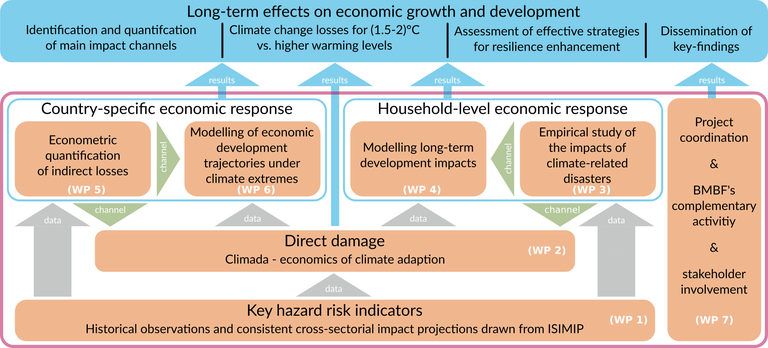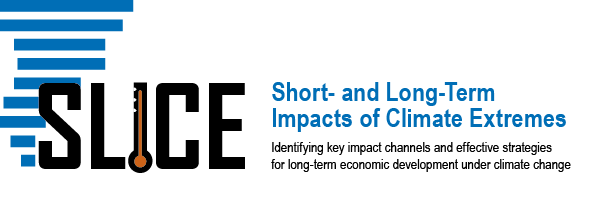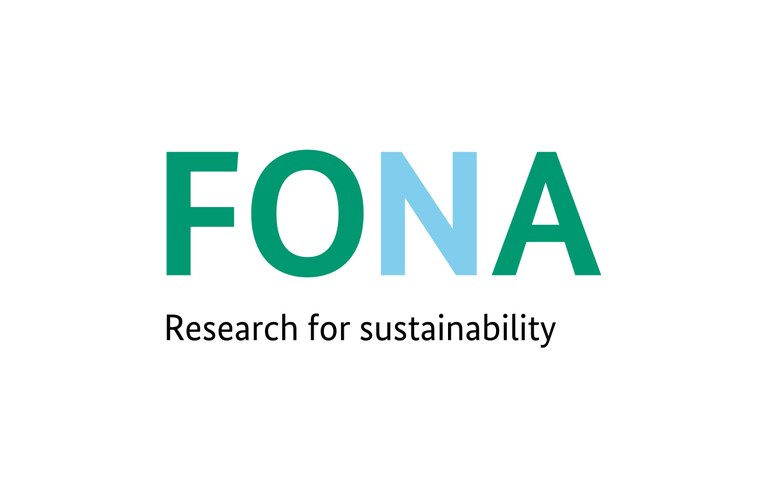Overview
The SLICE project is structured in seven interlinked work packages. The research in all work packages is strongly stakeholder-oriented and guided by ongoing stakeholder interaction.

In WP1, we draw on historical data and future projections of biophysical hazards from the ISIMIP archive and translate them into cross-sectoral consistent projections of key hazard risk indicators. WP2 then develops empirical damage functions translating biophysical impacts into direct economic losses. These functions are then employed in CLIMADA to estimate spatially-distributed direct losses for climate extremes of different categories. Risk indicators and direct losses from WP1 and WP2 are used in WP3-6 to gain a better, processed-based understanding of the long-term economic response to climate extremes.WP3-WP6 consist of two pillars: WP3 and WP4 focus on effects on the household level, while WP5 and WP6 investigate the macroeconomic response on the country-level. The combination of the micro- and macroeconomic perspectives advances (i) a sound understanding of the main channels through which climatic extremes impact on socio-economic systems, (ii) a quantification of long-term losses and a comparison of these losses for 1.5-2°C and higher levels of global warming, and (iii) an assessment of the effectiveness of different coping strategies ranging from physical adaptation measures (WP2) to financial instruments (WP3-6). WP7 comprises the project coordination, ensures the continuous interaction with stakeholders, and coordinates the dissemination of our results to a broad public. To ensure the high relevance of our work for stakeholders, we form an advisory board with stakeholders from international institutions, re-insurance companies, national governmental agencies, and academia. In the beginning of the project, a stakeholder kick-off workshop at the International Fund for Agricultural Development in Rome brings together consortium partners, advisory board members, and other key stakeholders; the research questions for each WP are refined to ensure that the project outcomes meet the stakeholders’ needs and are highly relevant for public and private decision-making.



